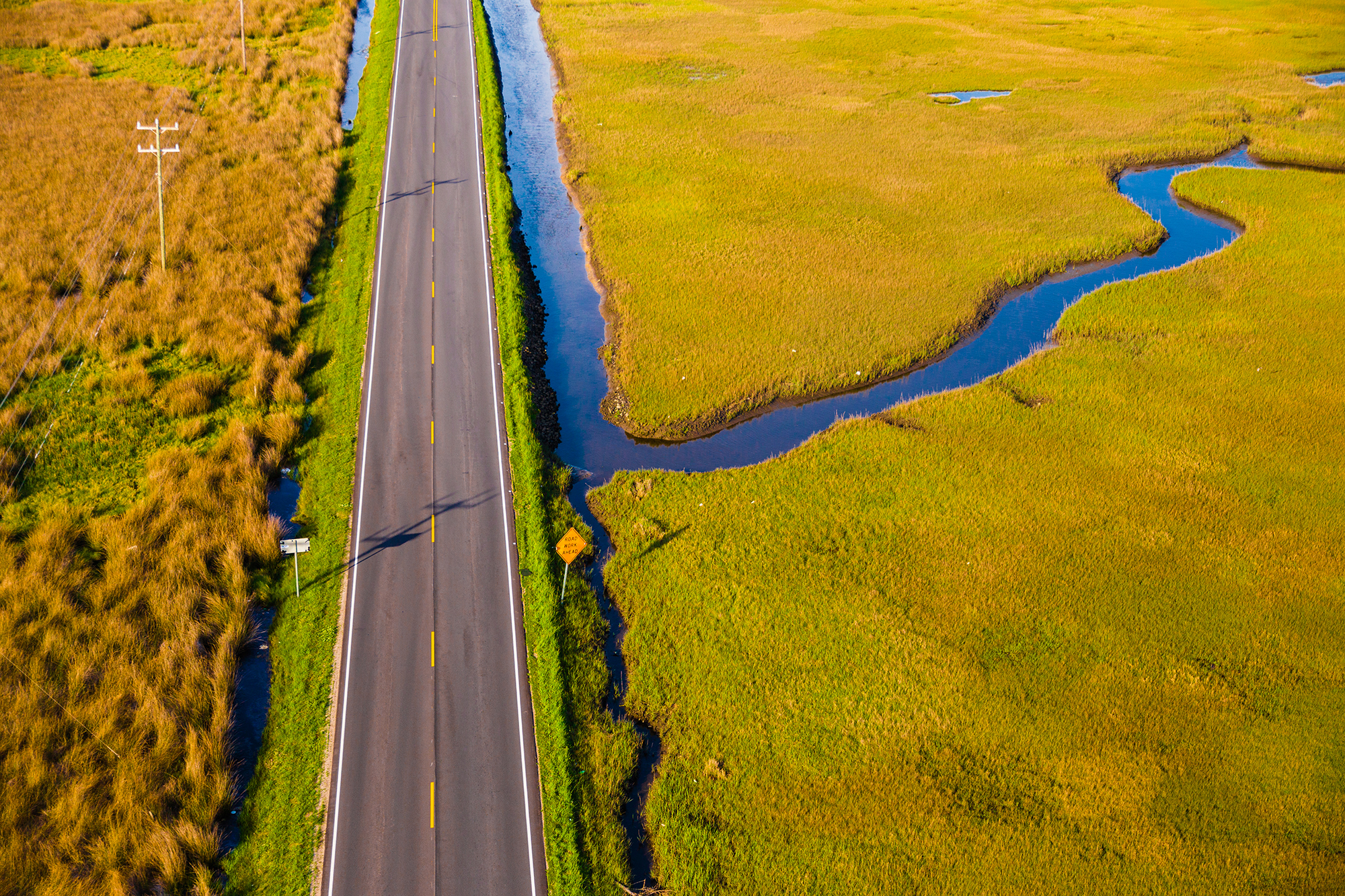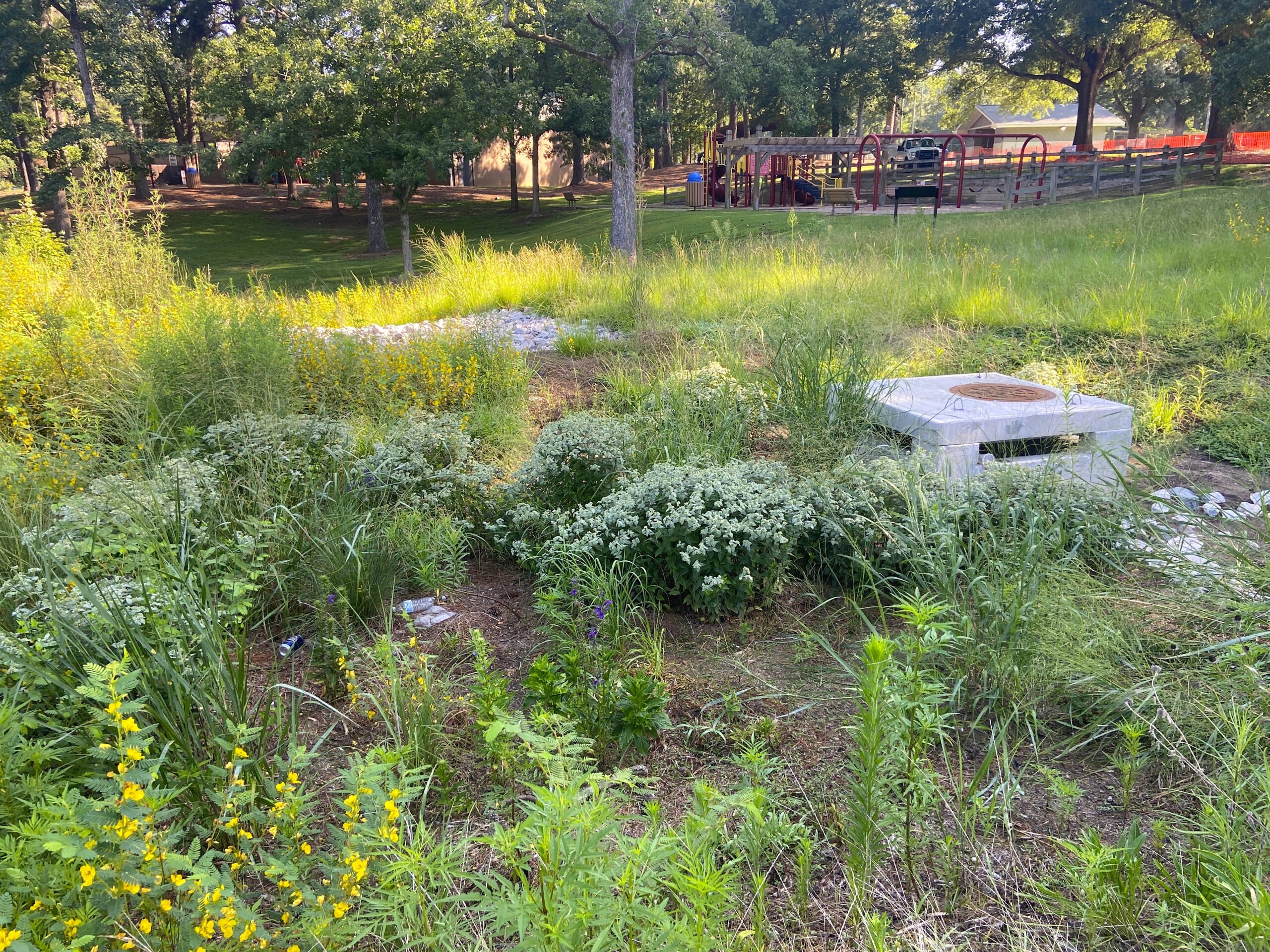Public Access Parking Pinch?

This summer, families from all over the United States will pack themselves into their cars and begin the trek to North Carolina’s beautiful shorelines. Whether they drive for two hours or 20, many travelers will endure the exasperating hallmarks of a family road trip: muscle-curdling leg cramps, crumb-covered seats, and crabby cries of “Are we there yet?”
The first glimpse of tall, wispy sea oats atop glistening sand dunes will be a welcome sight. But before they can unload — whether it is for a day trip or a week’s stay at a private bungalow off the beach — they must deal with one more nagging question: “Where will we park?”
North Carolina has more than 320 miles of oceanfront shoreline, and much of it is available for public use. However, accessing these areas isn’t always easy, especially for those who arrive by car.
“People can’t simply pull off the road wherever they please to access the beach,” says Walter Clark, North Carolina Sea Grant’s coastal community and policy specialist. “They must find a place to park — whether it is a privately owned facility or one owned by a local, state or federal agency.”
Approximately 12 million people visited North Carolina’s coastal region last year, according to the N.C. Department of Commerce (NCDC). That number or more are expected this year, and many will come by car. State and federal parks often have large parking areas, but some coastal communities are struggling to accommodate visitors during the peak summer season. Depending on the destination, visitors may feel a parking pinch.
“Parking is an issue everywhere, but particularly near ocean beaches,” says Michael Lopazanski, a coastal and ocean policy analyst at the N.C. Division of Coastal Management (DCM). “It is in very short supply, particularly for day users.”
Local policies on public beach access and parking vary among communities, says Spencer Rogers, North Carolina Sea Grant’s coastal construction and erosion specialist.
Some towns have free parking lots, while others allow parking on side streets adjacent to the beach. Some communities have no public parking at all.
In Southern Shores, two homeowner associations provide permit-only parking lots for residents, according to Rogers.
“Renting a house qualifies you for the week,” he explains.
Figure Eight Island has a private bridge, limiting access to owners and renters.
“There are public access walkways scattered along the island, but no parking spaces because the island is so narrow,” Rogers says.
Bigger communities usually have more parking, but often you’ll have to pay.
“Wrightsville Beach has parking sites where you have to pump quarters into meters,” says Lopazanski. Or you can pay via cell phone with the town’s new “Park-by-Phone” program — which also requires an annual membership fee and a 10 percent convenience fee.
And then there are communities that seem to have ample parking. Caswell Beach and Oak Island in Brunswick County were originally plotted with beach access in mind, according to Harry Simmons, the mayor of Caswell Beach.
In his three-mile long town, there are 12 access points and a parking lot that holds 80 cars. On Oak Island, the end of every street that crosses the island is a beach access point with available parking, he adds.
“In Brunswick County, you can find a parking space during the Fourth of July. You can’t do that at other places,” Simmons says proudly.
A 2006 survey by the North Carolina Beach, Inlet and Waterway Association (NCBIWA) found more than 600 access points and 6,500 parking spaces in North Carolina, earning the state an “A” for public beach access.
But that grade is slightly inflated, admits Simmons, who is also the executive director for the NCBIWA. “We gave it an ‘A’ primarily for the positive trend in increased access and parking,” he says.
Much of the increase is a result of towns participating in federally funded beach nourishment programs, adds Simmons. Federal law requires public beach access points within a quarter-mile of any place on the beach that received sand.
‘Take Pine Knoll Shores — five years ago, there was no public access,” says Simmons. Now, after a beach nourishment project completed in 2002, the town has five access points.
To create those areas, officials from Pine Knoll Shores received several grants from the Public Beach and Coastal Waterfront Access Program, a 1981 amendment to the Coastal Area Management Act (CAMA). The program, administered by DCM, awards about $1 million a year in matching grants to local governments to improve pedestrian access to the state’s beaches. Parking facilities are identified as one of the approved access facilities, along with restrooms, dune walkovers, piers and picnic shelters.
Pine Knoll Shores’ five free parking lots offer a combined total of about 150 parking spaces, according to Chris Jones, the town’s director of inspections and public property. But that’s not nearly enough to keep up with public demand, and the trend toward private developments is already straining new public access sites, he says.
The Triple S Pier in Atlantic Beach used to accommodate 100 cars, according to Jones. The former owner charged a fee for parking, but the public was invited to access the beach. The pier was torn down in March, and the area is being converted to private duplexes.
“There are 100 vehicles that now have to find somewhere else to go,” Jones says.
The recent acquisition of the famed “Circle” in Atlantic Beach for private development will increase parking pressure there and in surrounding towns, he speculates.
Although Atlantic Beach was able to retain some parking spaces on the street, many disappeared with the sale of the land. Atlantic Beach officials were unable to comment on specific figures regarding spaces retained or lost.
“Oceanfront and soundfront property is being bought up so fast for development that public access is not adequate,” Jones says. “Private areas where the public was once invited to access the beach are being lost.”
Similar stories are echoed from Corolla to Kure Beach.
“We’re building like gangbusters down here,” says Todd Rademacher, planning director for Surf City.
To try to retain that traditional access, some towns, like Pine Knoll Shores and Surf City, have purchased private land and made it public.
In 1999, Pine Knoll Shores bought part of a site that once included the Iron Steamer fishing pier. With the help of a $450,000 grant from DCM, the town acquired 100 feet of oceanfront property and an adjacent parking lot. With another DCM grant, the town added two restrooms, shower facilities, a dune crossover and an emergency access ramp.
In Surf City, a similar acquisition cost $2.9 million. The town recently bought Cindy’s Oceanside Restaurant — adjacent to the town’s regional parking area — and plans to turn the nearly 150-foot beachfront strip into a public access site. Town officials have yet to work out a specific plan for the facility, scheduled to open next summer.
The hefty price tag will be worth it, explains Rademacher.
“You can’t put a price tag on public access to the beach — it’s a resource that is shrinking every day,” he says.
The town currently has 29 public access sites, and at least half have free parking facilities, notes Rademacher. More beach access and parking means more tourism dollars for the town and local businesses, he explains.
“The ocean is our biggest amenity.”
But for many municipalities, the cost of purchasing private land is prohibitive, forcing them to maximize existing parking areas.
“We’re trying to leverage all the sites we have now,” says Andy Carman, town planner for Nags Head.
The town has about 40 access points, and almost all have free parking. Some sites have as few as 10 parking spaces, others have as many as 80 spaces, according to Garman.
This year, Nags Head officials applied for five grants from DCM and the Dare County Tourism Board to update and expand the town’s beach access points. They plan to add parking lots, dune walkovers and other facilities to the sites.
The town of Kill Devil Hills is pursuing a similar strategy. Officials received a DCM grant in 2005 to upgrade the town’s only regional parking lot, located on Ocean Bay Boulevard. The site has 40 parking spaces plus 28 spaces in a satellite lot across the street.
“Our public access sites see a tremendous amount of use,” says Meredith Guns, the assistant planning director for Kill Devil Hills.
The town has 29 public access sites, and most accommodate up to 25 cars. A new neighborhood access site is scheduled to open on Raleigh Avenue early this summer. But no matter how many new parking spaces are added, there will always be eager beachgoers waiting to fill them up, says Guns.
Rademacher, of Surf City, concurs: “You can never have enough parking.”
Garman, the planner for Nags Head, urges frustrated beachgoers to be patient and to keep some perspective.
“People can find a parking spot if they look long enough,” he says.
Garman says he’ll drive to three or four of the Nags Head’s public access points to find a parking space during summer months.
“At least it’s not like Virginia Beach, where I’d have to drive 20 or 30 minutes to find a parking lot where I have to pay, and then cart my stuff for five blocks.”
KNOW BEFORE YOU GO:
Types of Access Sites across Coastal North Carolina
Find a parking spot before heading to the beach this summer.
Log on to a special section of the N.C. Division of Coastal Management Web site (www.nccoastalmanagement.net) and use an interactive map tool to find public access sites and facilities along the coast. Click on “Beach and Waterfront Access,” then “Find Access Sites.”
The maps group public access sites into four main categories:
Regional sites are generally the largest. There are exceptions, but usually regional sites have ample parking (25+), and many have additional facilities such as restrooms, showers and picnic tables.
Neighborhood sites generally have fewer parking spaces than regional sites and usually don’t have facilities such as showers or restrooms.
Local sites are often simple dune crossovers with little or no associated parking or facilities. However, bicycle racks may be provided. Pedestrians living or vacationing within a few hundred yards primarily use these sites.
Waterfront sites are typically located on estuarine waters in urbanized areas. They vary greatly in the amount of parking and facilities provided.
This article was published in the High Season 2006 issue of Coastwatch.
For contact information and reprint requests, visit ncseagrant.ncsu.edu/coastwatch/contact/.
- Categories:


